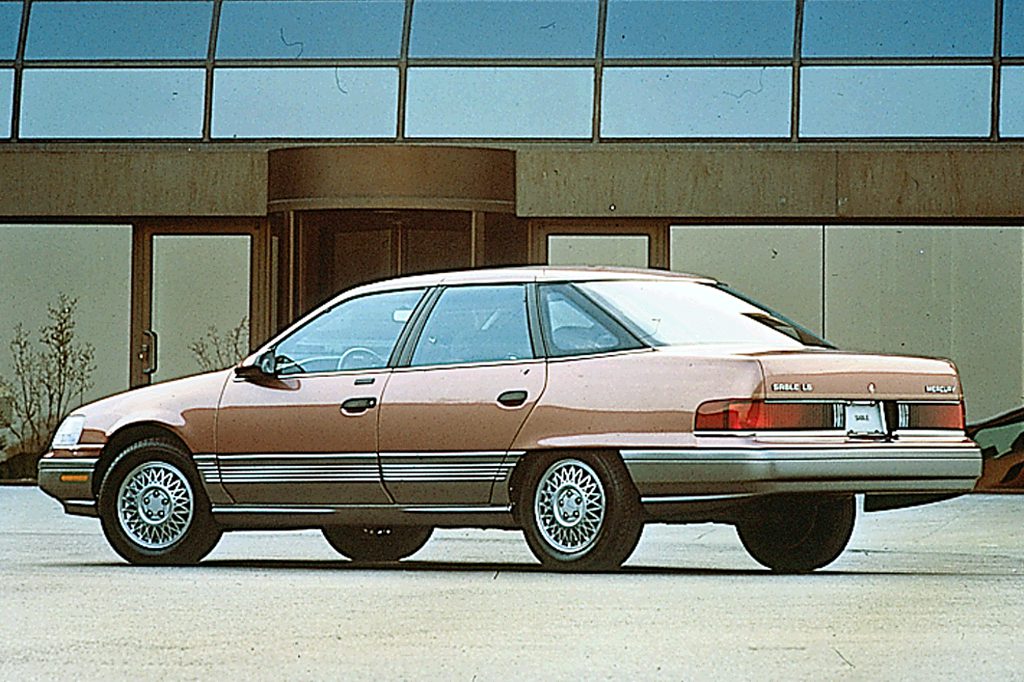| Midsize car; Built in USA |
|
|
| Good condition price range: $1,000 – $1,800* |

1992 Mercury Sable 4-door sedan

1991 Mercury Sable 4-door sedan

1992 Mercury Sable 4-door wagon

1993 Mercury Sable interior

1991 Mercury Sable interior
| Pros: |
|
| Cons: |
|
The Mercury Sable and Ford Taurus, the best-selling sedan in the country for over four years, have remained popular with the buying public because they continue to represent a good value when compared to other midsize cars. They’re roomy, well-built, have competent road manners, and sell at reasonable prices.
Overview
The Mercury Sable shared virtually all mechanical components with its stablemate, the Ford Taurus. Standard power for both GS and LS trim levels came from a 3.0-liter V6 and 4-speed overdrive automatic. The optional 3.8-liter V6 delivered the same amount of horsepower (140), but instead of 160 pound-feet, put out 215 pound-feet of torque.
Yearly Updates
| 1991 Sable A new transmission and optional antilock brakes for the station wagon make news for Mercury’s front-drive intermediate sedan. The 4-speed overdrive automatic arrives with electronically controlled shift points. Although the power ratings remain the same, the basic 3.0-liter V6 now comes with sequential multipoint fuel injection for more precise fuel metering and better combustion. Finally, the optional antilock brakes available only on the sedan are provided for Sable wagon buyers as well. |
| 1992 Sable Although the Sable appears much the same for 1992, every exterior body panel, except the roof, has been altered. Despite the new set of clothes, the dimensions of the Sable are unchanged inside and out. Also unchanged are the powertrains. A driver’s airbag is standard, while a passenger-side airbag is optional. |
| 1993 Sable For 1993, the optional passenger-side airbag becomes standard equipment on all Sable models. Also, front bucket seats with a center console can be ordered in place of the standard bench seat. |
| 1994 Sable Making a rear-window defroster standard and changing the steering wheel are among the updates to the 1994 Sable. On the new steering wheel, the airbag doubles as the horn pad. A new trim level, the LTS, was a midyear addition to the Sable line. The LTS version comes with 6-way power leather bucket seats, leather-wrapped steering wheel and shift handle, upgraded carpets, all power accessories, upgraded cassette, cruise control, and remote keyless entry. |
| 1995 Sable The Sable returns with only minor changes for 1995, in anticipation of an all-new 1996 model. |
